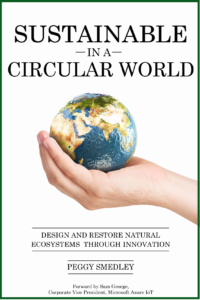For more than a decade, we have been talking about how builders can put technology—back then it was called AHT (automated home technology)—in new homes as a competitive advantage when selling houses. Today, it is no longer a competitive advantage; it is expected by consumers. So, what exactly should go inside new homes? The answer is long and short. If we were to sum it up in a word, it would be sensors.
Sensors enable homes to become smarter. They can create more convenience in the home, while also providing an environmental impact. However, ABI Research suggests it is the demand and comfort among consumers or how data is captured in the home that will shape which sensing technologies win out.
A new report suggests by 2027, 4.6 billion sensors of various types will ship embedded in smart home devices, robots, and appliances, which is up from 1.8 billion in 2021. That is quite the leap. Some of these sensors are already key to the functionality of devices, while others support additional functionality.
So, it looks to be a mix of both old and new sensors coming to the market—everything from motion and moisture to LiDAR and biometrics. As an example, a single sensor for something such as lighting levels or motion could be leveraged across a range of applications to support everything from home environment management to automated lighting, according to ABI Research.
Many people here in the United States are talking about the upcoming Matter specification for device interoperability that will further fuel sensing data across smart home systems—that is if it actually does ever arrive. I first started hearing about Matter back in 2019 and the hype back then was for a 2020 release date. Much was delayed in 2020, and Matter was no exception. But here we are in the middle of 2022, and we are still waiting for Matter to arrive in full force. But it does have the backing from giants like Amazon, Apple, Google, and more.
Some builders get it. For instance, I recently spoke with Greg Howell, CEO of Hurricane Builders, in Columbia, S.C. and he is determined to construct homes that provide some of the technology that meets the needs of today’s younger buyers. He recognizes that today’s new homebuyer expects a smart home as a “must have” rather than an option. Builders need to look to “smart solutions,” as essential as HVAC. As I see it, smart solutions and energy-efficient homes will quickly separate the wheat from the chaff, as younger buyers look to settle down and plan for their future.
Meanwhile, Europe has a good thing going with KNX, which is an open standard for homes and building automation that can manage lighting, blinds, HVAC (heating, ventilation, and air conditioning), security, energy management, audio/video, and so much more. Using twisted pair, powerline, RF, or IP links, KNX evolved from three earlier standards: the European Home Systems Protocol (EHS), BatiBUS, and the European Installation Bus (EIB or Instabus). If widely used in Europe, why isn’t this standard more popular here in the United States? That’s a good question, and one I recently asked on the Project Sustainability Podcast.
Many of the KNX vendors still have work to do here in the states to make it more widely available and affordable. However, when KNX partners up their game, this just might be the standard of choice. But like all standards, they still have work to do to get there.
The bottomline here is sensors are coming for the homes you build. Will you build new homes with all the “smarts” today’s homebuyer is looking for?
Want to tweet about this article? Use hashtags #construction #IoT #sustainability #AI #5G #cloud #edge #futureofwork #infrastructure #smarthome


